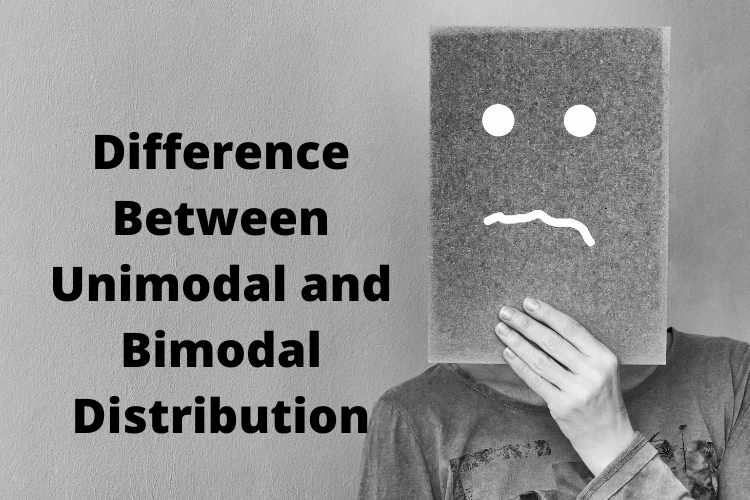Every day, in every part of our lives, we come across random variables. These random variables are essential in a wide range of fields, including chemistry, engineering, and physics, as well as management and social sciences. The distribution function, which is a basic aspect of these, is examined and quantified in terms of their probabilistic and statistical features. When we say “distribution” in statistics, we typically mean “probability distribution.” Statistics data distributions might contain a single peak or several peaks. The term “unimodal” refers to a distribution with just one peak, whereas “bimodal” refers to a distribution with two peaks. Here is the detailed difference between Unimodal and Bimodal Distribution.
What is a Unimodal Distributions?
As the name implies, a Unimodal Distribution is a single peaked distribution, meaning that one value occurs more frequently than the others. The form of many distributions has a distinct apex. A unimodal distribution is one in which there is just one clearly apparent peak or most common value. This indicates that the form of the distribution has only one primary high point. The values rise until that point, at which time they begin to fall. Unimodal distributions are not always symmetric; they might be asymmetric or skewed, for example.
Read: Difference Between Complement and Supplement
What is a Bimodal Distributions?
A bimodal distribution is defined as one with two about equal high peaks. It’s a distribution in which two values occur most frequently. The term “bimodal” alludes to “two,” while “modal” refers to the peaks. You have two data peaks, which typically means you have two distinct groups. A bimodal distribution is one that has two noticeable peaks or two frequent values separated by a gap. The two modes are generally separated by a large gap, and one mode carries more data than the other.
Read: Difference Between Fish Oil and Cod Liver Oil
Points of Differences
- Depending on the frequency of the occuring values, a distribution’s modality can be either Unimodal or Bimodal. Unimodality refers to a single peaked distribution in which one value occurs more frequently than the others. A bimodal distribution, on the other hand, is one in which two values appear with the highest frequency, implying that two frequently occurring values are separated by a gap.
- In a unimodal distribution, the form of the distribution has only one primary high point. The highest point is sometimes in the middle, while other times it is to the right or left. A bimodal distribution, on the other hand, has two high peaks that are roughly equal (or the modes). The two modes are generally separated by a large gap, and one mode carries more data than the other.
Conclusion
In last, I hope this article is sufficient enough to clarify the difference between Unimodal and Bimodal Distribution.

